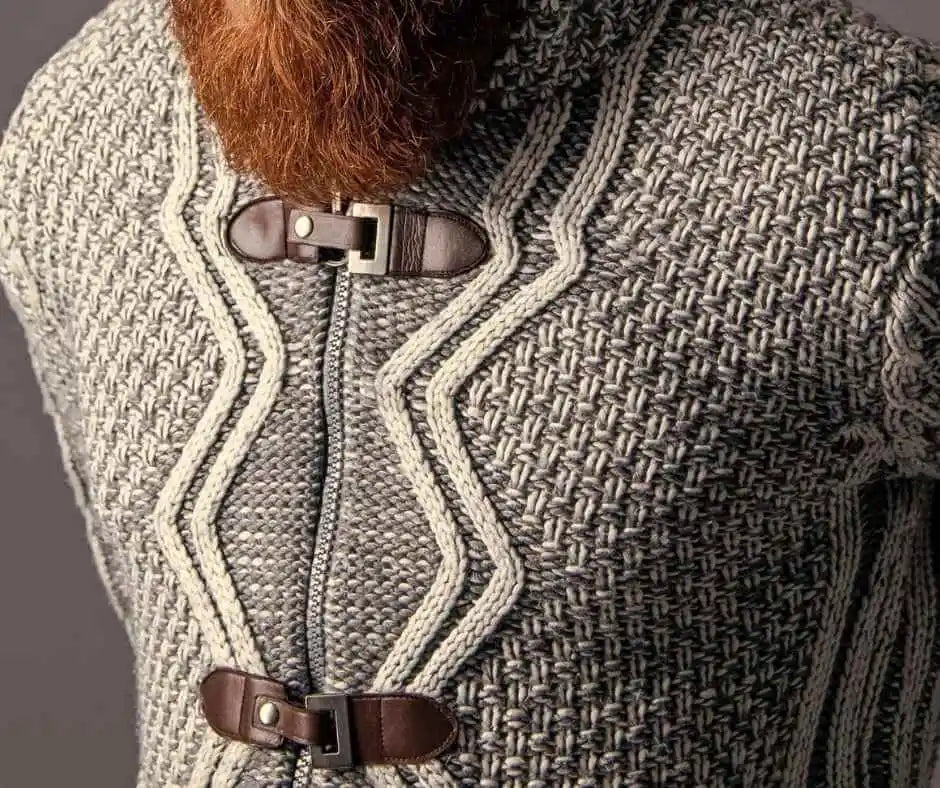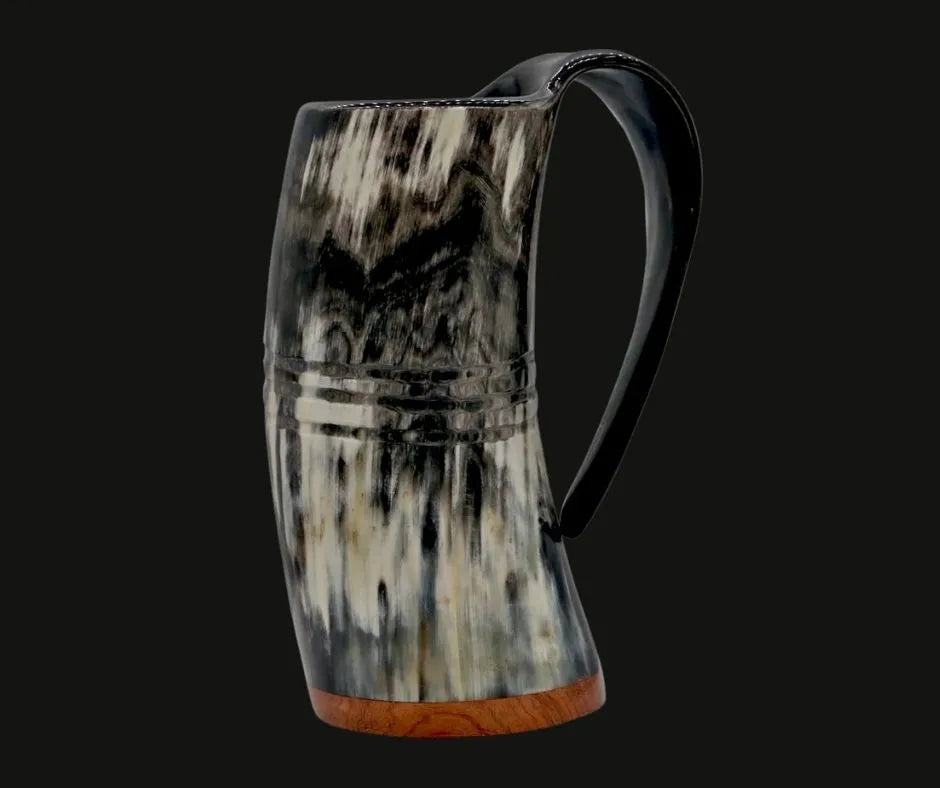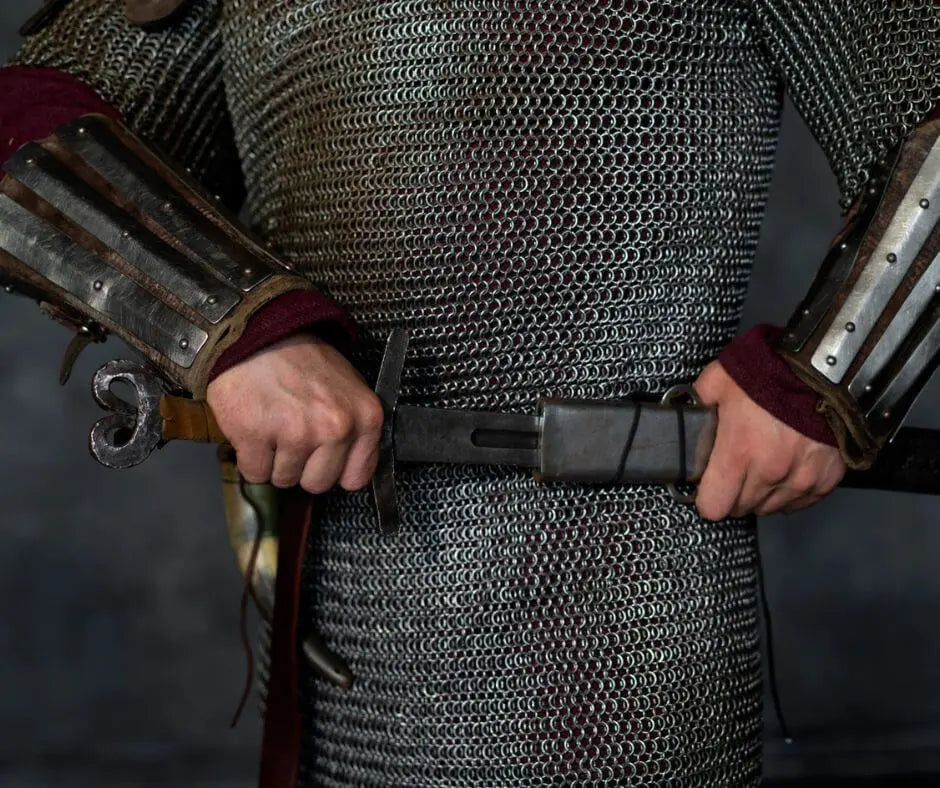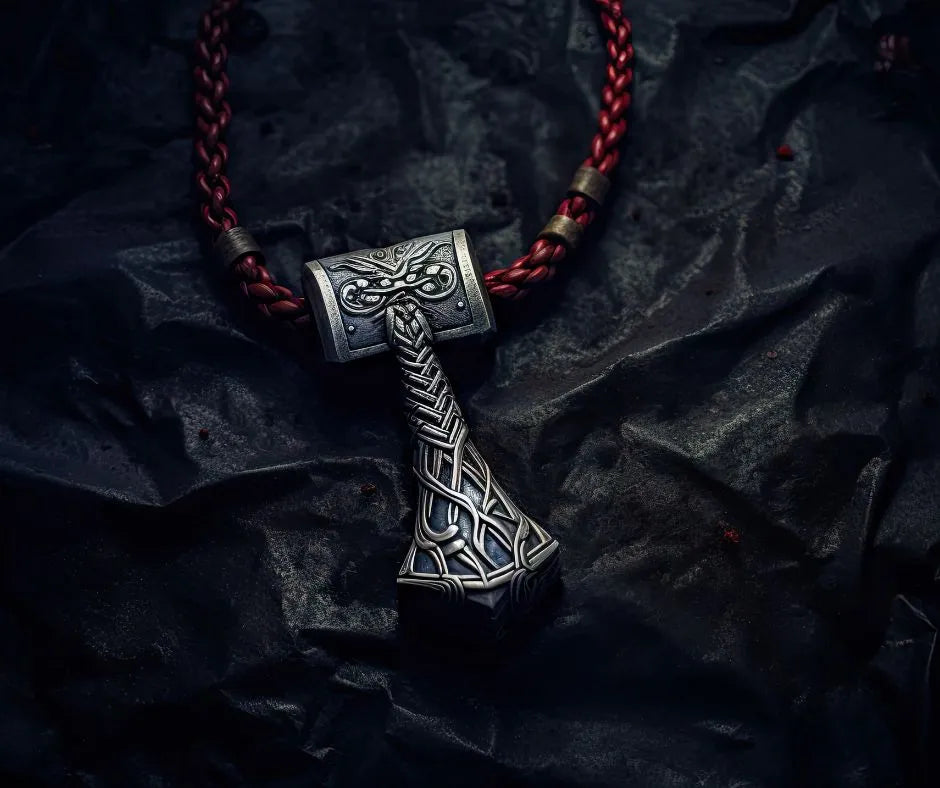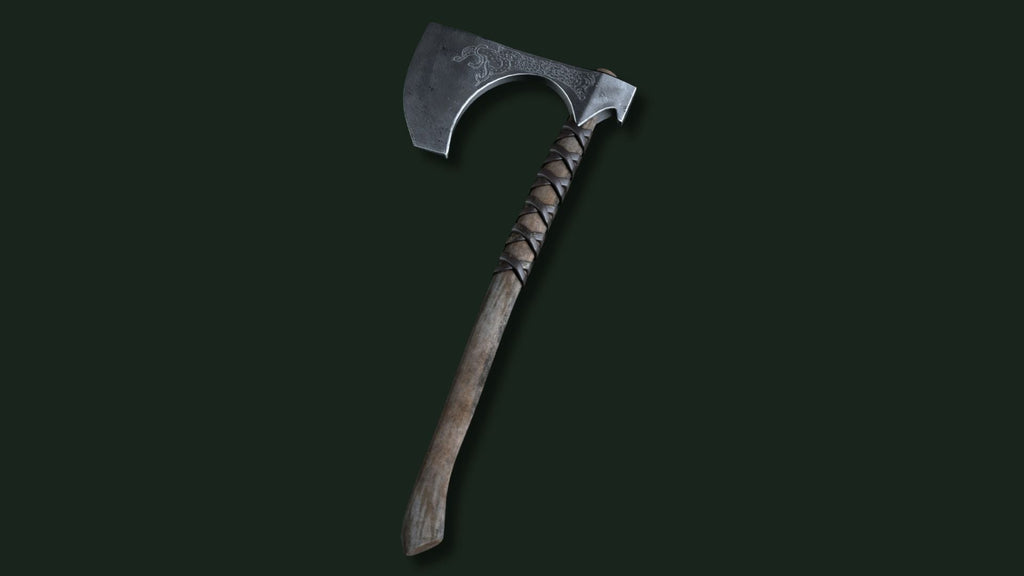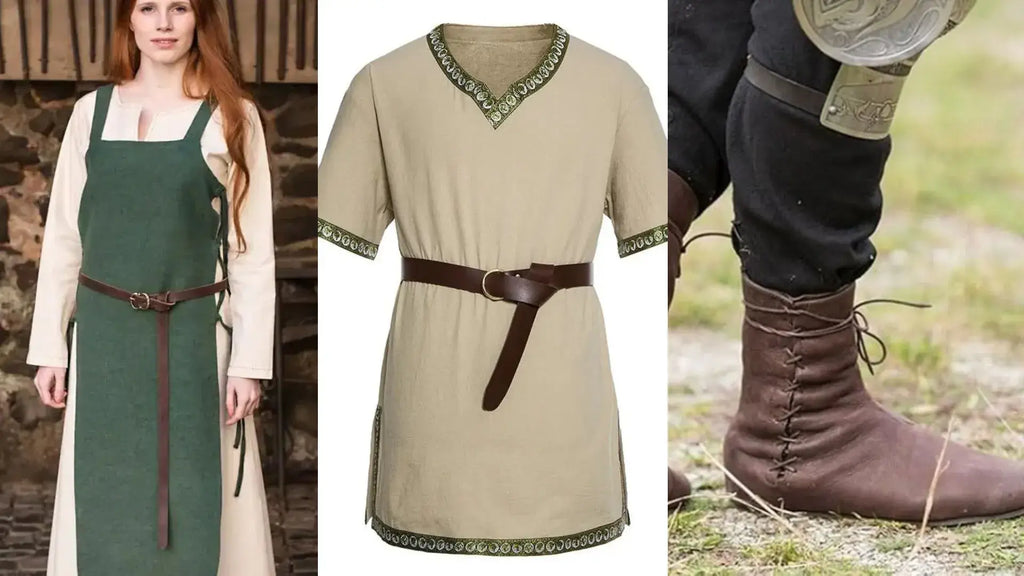Jewelry
Clothing
Lifestyle
EXPLORE OUR BEST SELLERS
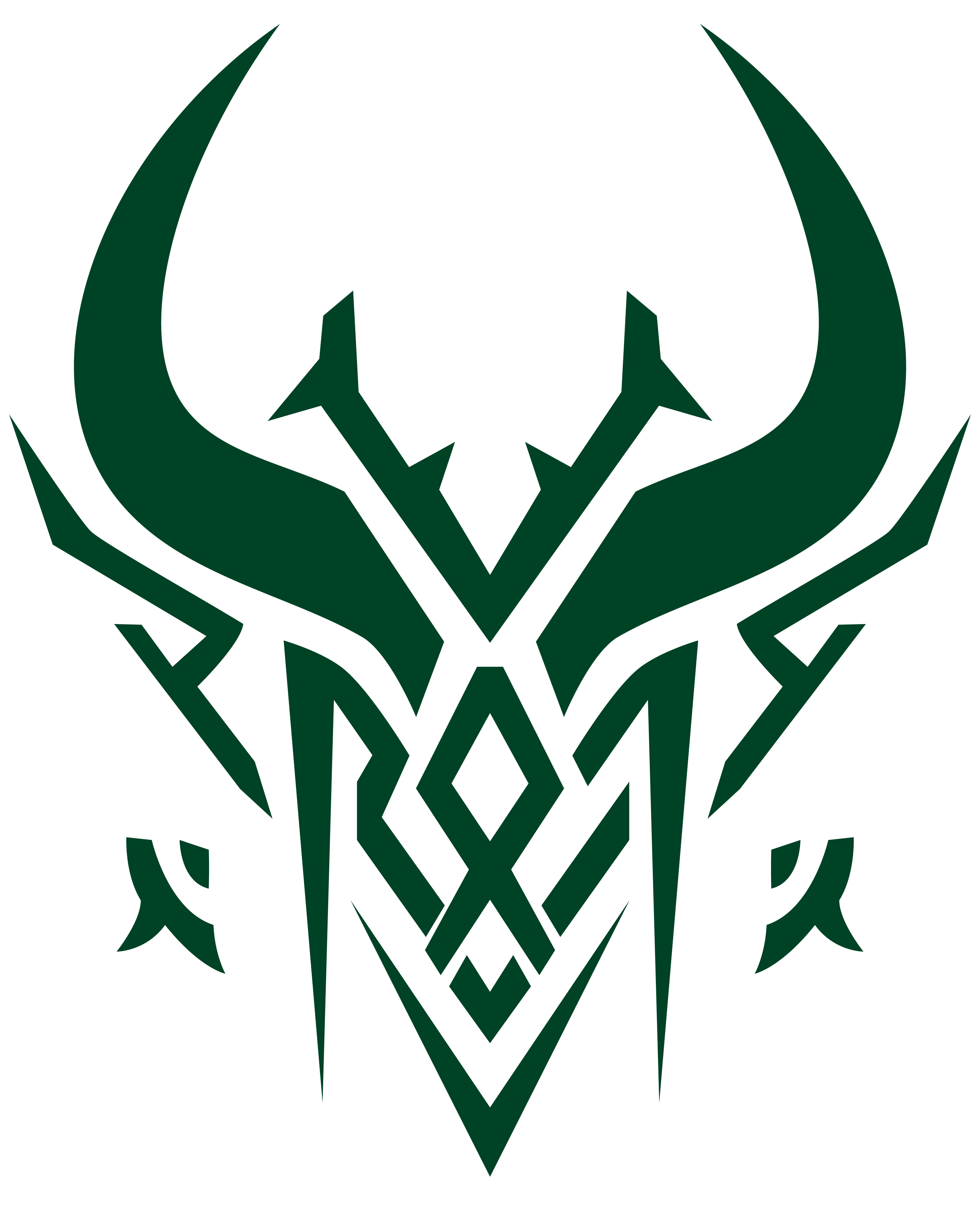
Vikheim's Blog
Explore Heritage, Culture, Adventures and Norse Mythology
The Viking Age took place from the years 793 to 1066. In that time, a variety of weaponry was developed, but none as notable as the bearded axe known to Norse as the Skeggøx.
In Old Norse, skegg translated to “beard” and øx to “axe”. Thus, the aptly named Skeggøx is known for its bearded blade that was creatively useful in combat and daily life alike.
Skeggøx’s Origins
We go to the year 600, before the Viking Age began, to find the first instances of the bearded axe that would become the go-to Scandinavian tool. It has been found that the bearded design was used in tools for agriculture, forestry, and woodworking. By the years 700-800 CE, the evolution into a weapon began as shown through grave finds in Denmark and Norway. It appears natural that as the Viking Age began and raiding expanded, the crafting of weaponry extended as well.
Axe Design
Look to the blade to identify a Skeggøx. They were designed to be lightweight and versatile, weighing only 1-4 lbs (0.5-2 kgs) with a 6-inch (15-cm) blade, though they were designed as small as 3-inch (7.5-cm) to 9-inch (22.5-cm) depending on the origin, time period, and use. The “beard” is the inner edge of the blade under the neck. In a Skeggøx, it has a drastic curve that gives it its distinct appearance.
The longer blades, 6-9 inches (15-22.5 cm) allowed for different use. The larger, heavier blade with a narrow edge enabled deeper cuts through armor in combat. The beard itself allowed for creative tactical use, hooking onto shields for control of an enemy’s main defense, or even disarming them entirely. In woodworking and shipbuilding, it would allow for easier shaping of timber.
Differences Between Bearded Axe and Other Axes of the Era
Bearded Axe |
Dane Axe |
Francisca Axe |
Mammen Axe |
 |
 |
 |
 |
Dane Axe
While there are reports of large Skeggøx blades up to 12-inches or 30-cm, these are likely Dane axes or broad axes. The Dane axe is designed to be two-handed with a larger blade, up to one foot in length, and used specifically for battle. They were heavier, around 2.2-4.4 lbs (1-2 kg), remaining lightweight but enhancing its power in combat. The long haft of 3-5 ft (90-150 cm) provided further leverage for devastating blows on the battlefield.
Francisca Axe
The francisca or francesca throwing axe was a weapon of the Franks. It was commonly used during the reign of Charlemagne (768-814 CE), overlapping with the start of the Viking Age. It also featured a beard, though shorter and less pronounced than the Skeggøx.
Mammen Axe
The Mammen Axe isn’t a type of axe, but an axe identified by its artistic styling. Named after a burial find from 970-71 CE in the village of Mammen in Denmark. An axe found here was made of iron with an intricate silver inlay. The style was prominent in the years 900-1000. Mammen Axes are the perfect Viking culture depiction, combining both art and war.
The Skeggøx Use in Combat
The Skeggøx was a tactical tool on the battlefield. Its style allowed versatility. The lightweight versions may have been used for throwing.
Tactical Advantages
While not as deliberate as the Frank’s francisca axe, the size and weight allowed for this as a creative or last-ditch move. More commonly, the Skeggøx’s beard would hook onto shields or rip weapons out of their opponent’s hands. This could throw the opponent off-balance while exposing them without protection. That’s where the precision of a cut from the Skeggøx’s balanced weight and sharpened blade could land finishing blows. Held closer to the head of the axe, the Skeggøx becomes a dangerous weapon in close-quarters. It is truly a versatile tool for the Viking warrior.
Use in Daily Life
The Norse are well-known for their shipbuilding and woodworking, which the Skeggøx was used for extensively. The beard allowed for precise cuts and shaping of wood, whether for building a ship or home. Additionally, they were used in hunting to kill and process animals, including both butchering and skinning. And on the farm, the Skeggøx could help clear forests, chop down trees, and split logs for fire. It was a multifaceted tool at home, too.
A Significant Item for Every Viking
Axes were an important part of the Viking’s arsenal, and the Skeggøx was one of the most prominent axes of the time. Mentioned in the book of Viking poems, the Hávamál, axes were suggested to also be held close. It was common in burials to place an axe with the fallen warriors. From burials and archaeological digs, we’ve discovered that axes outnumbered swords three-to-one.
The Skeggøx remains a meaningful element in Viking culture, recognized by its distinct shape, and known for its versatility. While not the only axe used by Vikings, it’s worth being part of any Viking’s armory.
While many people learn about Viking culture through movies and TV shows, the historical accuracy of this media isn’t always strong. There is a great deal we now know about what Vikings wore for clothing, jewelry, and adornments.
There are specific materials used, types of clothing, and ways of putting together a historically accurate Viking appearance. All of this has been confirmed over time through burial finds, artwork, and literature. We’ll break down each of these below.
What Materials Vikings Used
Vikings were resourceful, finding resources in their environment to use for clothing, shoes, and jewelry.
Wool and linen were most common for clothing.
Wool provided warmth and durability for the harsh environment and weather conditions the Norse found themselves in at home and during travels. Linen, on the other hand, is a more breathable material, providing coverage without keeping heat in too much. Like today, the materials worn and layers depended upon the weather.
Leather
Shoes were often made with leather produced from goats, sheep, and cattle. Again, the use of leather was based on the need of durability due to their environment. Additionally, both linen and wool would be woven into the shoes to provide additional comfort and insulation.

Viking Skógvandr Boots - Unisex - SHOP NOW
Norse jewelry was created from a variety of materials
Precious metals, pure metals, alloys, and natural elements
Vikings were skilled metallurgists, using a range of metals for different purposes, including weapons and tools as well.
For jewelry specifically, silver was the most common precious metal, with gold being used occasionally as well and typically for the wealthier Vikings.
Iron, as a pure metal, was common for everyday items and tools because of its durability and economic accessibility. Bronze, an alloy of copper and tin, commonly appeared due to its durability and strength as well.
Beyond metals, the Norse used organic resources such as:
- Amber
- Glass beads
- Animal bones, claws, and teeth
Amber was sourced from Scandinavia’s Baltic Sea and used in necklaces, pendants, and rings. Using flameworking techniques, artisans created glass beads used in necklaces. Finally, one of the other common resources used were from animals, including both bones, claws, and teeth. Beads, pendants and necklaces would be carved, often with rune designs engraved within them.
What other materials would you see during this time?
Shells, antlers, horns, wood, and even Walrus ivory.
Remember, Vikings were not just notorious raiders, but dedicated traders as well.

Nordic Dyes and Colors
During the Viking Age, a variety of techniques were used to incorporate colors into clothing. Natural colors came from materials like wool, such as white, brown, and gray. For other colors, plants commonly provided a color basis, while mordants like iron and copper were used to meld dyes into fabrics.
Common plants and colors included Woad for shades of blue, madder for oranges and reds, weld for yellows, lichens for purples, and walnut shells for browns. Other plants could be combined to achieve greens, oranges, and pinks, though they were less common.
Clothing for Men and Women in the Viking Age
Viking Men’s Clothing
The average male Viking outfit can be broken down into three categories: the base layer, the top layer, and accessories.
The base layer is composed of a tunic, trousers, and footwear. The tunics were fairly long, falling to the knee, and created with either wool or linen. Trousers could be either loose-fitting or tight and also made with wool or linen. Leather footwear would complete the base layer for the outfit. Turnshoes were most common, created from a single piece of leather. Boots were worn as well, though not as commonly.

Men's Viking Kyrtill Tunic - SHOP NOW
The top layer brings us to cloaks and mantles, which helped manage the harsh weather conditions of Scandinavia and during the Vikings’ travels. These were worn for both warmth and protection. On the sea, there’s an element of water resistance, and in battle, some light protection, though limited in both instances. Blue, red, or fur-lined cloaks would signal a level of status and wealth in Nordic society.
Accessories were many, including jewelry, belts, leg wraps, and brooches. Jewelry would have included necklaces, pendants, arm rings, rings, and brooches. Metal brooches would be used as a clasp to fasten cloaks. Leg wraps, also called winingas in Old English and Vindingr in Old Norse, were worn around the calves. They provided further comfort and warmth, with functional benefits for movement at work or combat alike. An outfit is complete finally with a belt, worn around the tunic to support the clothing, for functionality to carry tools and weapons, and as a status symbol for wealthier Norsemen.
Viking Women’s Clothing
For Viking women, a variety of dresses and accessories were worn, created with both practicality and aesthetics in mind.
The women’s base layer was typically some type of apron dress, called Smokkr in Old Norse. These were worn over a long, linen underdress called a Serk. The serk could have been plain or pleated, depending on the region of Scandinavia it was designed in. The apron dress and accessories is where more intricate designs would be incorporated.
As a top layer, shawls and cloaks were worn. Like with the men’s cloaks, added warmth was a key reason for their use, as well as general protection from the elements. Cloaks and shawls alike were commonly made with wool, but linen would also be used. Shawls, cloaks, and dresses were fastened together with brooches, which added both aesthetic appeal and symbolism to an outfit. Brooches would also be adorned with beads to enhance their beauty.

The Viking woman’s outfit would be completed with accessories, including necklaces, pendants, rings, and hair accessories, as well as pouches for carrying items. Excavation sites have found small items near the waist of Viking women, indicating that pouches, bags, or purses made of organic material may have decomposed over time.
Myths vs. Reality: Common Misconceptions
While we appreciate how Hollywood has introduced Viking culture to millions of people, there’s a lot that is misinterpreted along the way. Perhaps nothing is more prominently displayed while being a complete work of fiction as the horned helmets. No, Vikings never wore horned helmets.
There are simpler elements of Viking attire that are not accurate as well, though. Vikings did wear fur and leather, but not to the extent as you’ll see on the screen. It gives a nice look, but Vikings wore more practical clothing. Likewise, the Nordic culture valued grooming and cleanliness, so those dirty Vikings with tattered clothes also are not necessarily representative.
Footwear was commonly shoes, while we often see Vikings in boots. Boots were worn, but not the norm. Just the same, gold and silver jewelry was worn, but typically by the wealthier Vikings only. The majority wore jewelry created from natural materials like bone and amber.
As a final note, the Vikings did not have a single, uniform look. Their looks varied by region, as well as by person. Individual style was shown by what was worn and the variety of colored dyes they used. By region, a Viking from Denmark or living in Ireland may not have visibly comparable attire.
How to Recreate an Authentic Viking Outfit
So, you want to create your own Viking outfit while remaining historically accurate? That’s completely possible. You might want to decide how close to 100% accurate you want to be or if you’re okay with some modern interpretations and simply having fun with your style. After all, Vikings were adventurers and traders who didn’t fit a single mold, so you don’t need to either.
Let’s work through the outfit if you want to prepare for a reenactment
- Base Layer
Men: A tunic, trousers, and turnshoe-like footwear.
Women: An apron dress and an underdress.
- Outer Layer
Men: A cloak or mantle.
Women: A shawl or cloak.
- Accessories
Men: Jewelry, belts, leg wraps, and brooches to affix to your clothing.
Women: Jewelry, hair accessories, pouches, and brooches to affix the shawl, cloak, and dresses.
Viking-era clothing was practical, durable, and suited to the harsh Northern climate. Rather than the horned helmets and heavy metal armor of popular imagination, everyday Norsemen and women dressed in layered wool, linen, and leather with intricate patterns that reflected their culture and status.
Knowing what the Norse really wore gives us a clearer picture of not only their daily lives and resourcefulness but also of the complexity of their society. Their garments were not just for survival but also a means of expression, identity, and adaptation.






















